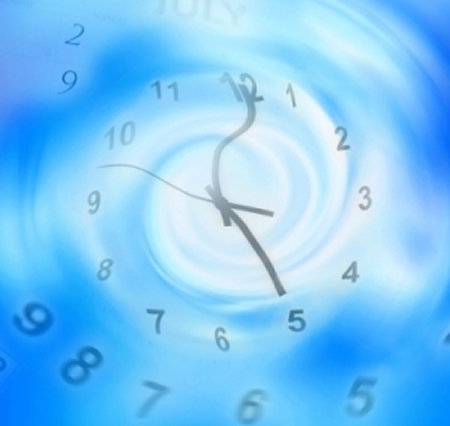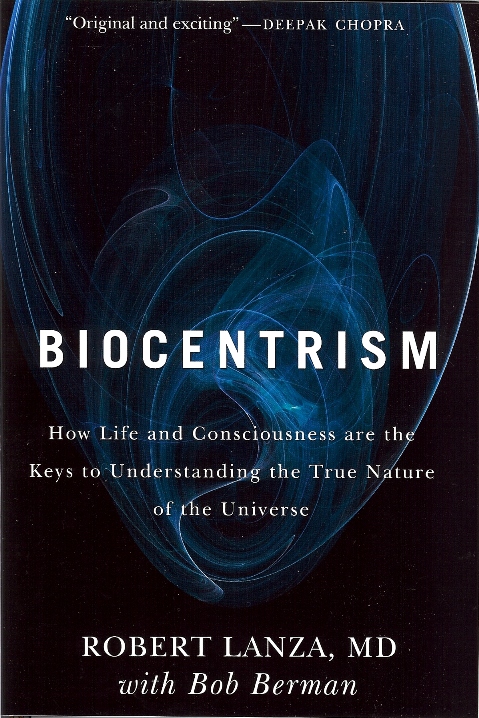Things are queerer than Einstein and Lewis Carroll ever imagined

Einstein once said “our science, measured against reality, is primitive and childlike.”
We think that the world is objective and ticks along like a cuckoo clock. But this little view of ours misses what’s really going on. We go to and fro our affairs, baking cookies and looking at pictures of Justin Bieber’s bare butt, oblivious to how superficial our understanding of reality really is.
Our science is so far off the mark that we might just as well be reading comic books instead of textbooks on evolutionary biology or quantum physics. However, recently some scientists have started to challenge a worldview that stretches back – beyond Sir Isaac Newton and Aristotle – to the first thinkers of civilized consciousness.
In the 18th century, Immanuel Kant declared space and time were properties of the mind. Biocentrism extends this view even further, suggesting that they’re not only biological constructs, but that there may be other information systems that correspond to other realities based on logic completely different from ours. These algorithms are the key to consciousness and why space and time and the properties of matter are relative to the observer. Although we experience a world of up and down, these algorithms could be changed so that instead of time being linear, it was for instance, 3-dimensional like space. Your consciousness would move through the multiverse and you could walk through time like you walk through space.
Everything you experience is information occurring in your head. Space and time are just our way of making sense of things. They’re not objects, but rather the software (like in a DVD player) that molds information into multidimensional experience. We take this ability for granted. Even in dreams, our mind generates a reality, with a functioning body that interacts with a surrounding physical environment. Although a mental fabrication, you’re able to think and experience sensations just as real as you do now.
However, more primitive life, such as simple invertebrates, may only experience existence in one dimension of space. Evolutionary biology suggests that life has progressed from a one dimensional reality, to two dimensions to three dimensions, and there’s no reason to think the evolution of life stops there. Ultimately, consciousness runs upward by insensible degrees from the lowest forms of life through to vertebrate existence, and far beyond us to extracorporeal (transcendental) existences that we can’t even fathom. Although we experience them piece by piece, like the songs on a record, they represent parts of a unitary reality that exists outside the classical divisions of space and time.
This came into focus one afternoon while strolling through a field. A large woodchuck ran by me. There was nothing remarkable in that; nor did I think it unusual when he stopped a moment, holding up his paws and looking at me with the curious glance of the White Rabbit, as if to say, “Why, Robert, what are you doing out here?” But when the creature looked into my eyes and twitched its whiskers, I felt the Élan Vital in him, a certain sense of consciousness that cut across space. Then it ran off, and I too. You see, there was a joining, a projection of desires across the species boundary. For just a moment, I could feel the guide hairs on the back of my neck, even as the woodchuck might have felt them himself.
Some people will say the sun was hot upon me that day, and that I shouldn’t burden my readers with this affair. They don’t think there’s any other explanation left. However, you’ve probably heard about the two-slit experiment, and other experiments that suggest the structure of the physical world is influenced by human observation. The results of these experiments are fantastic, I agree. But when quantum physics was in its early days, even some physicists dismissed the findings as impossible. It’s curious to recall Einstein’s reaction to the experiments: “I know this business is free of contradictions, yet in my view it contains a certain unreasonableness.” Yet later he admitted quantum mechanics is logically unexceptionable. Maybe so, but I’ve spent my entire career studying the basis of life. I have faith in life, not a set of equations.
No doubt the equations are right, but perhaps it’s wiser to interpret nature in terms of life rather than in terms of wave functions. To me, my interaction with the creature that inhabited that field was more complicated, and will in the end penetrate closer to the secret of the universe than any experiment that ever was carried out in a laboratory.
It was only with the fall of objectivity that scientists began to consider again the old question of comprehending the world as a form of mind. Einstein, on a walk home, asked Abraham Pais if he really believed the moon existed only if he looked at it. Since that time, physicists have revised their equations in a vain attempt to arrive at a statement of natural laws that doesn’t depend on the circumstances of the observer. But in these days of disconnected theory, one point seems certain: the nature of the universe can’t be divorced from the nature of life itself. Indeed, quantum theory implies consciousness must exist, and that the content of the mind is the ultimate reality. Only an act of observation can confer shape and form to reality — to a dandelion in a meadow or a seed pod.
But that’s not all. The esteemed physicist Heinz Pagels once commented: “If you deny the objectivity of the world unless you observe it and are conscious of it (as most physicists have), then you end up with solipsism — the belief that your consciousness is the only one.” This may not unsettle you, except perhaps if you were standing in a meadow when everything was bathed in such pure light. But there I was, the creature a few rods off, its eyes fixed on mine.
I knew then that Pagel’s conclusion about solipsism was right. Only it wasn’t my consciousness that was the only one, it was ours. There was no doubt; that consciousness which was behind the youth I once was, was also behind the woodchuck. Aye, behind the mind of every creature existing in space and time, and beyond them to intelligences in other realities we can’t fathom.
“There are,” wrote Loren Eiseley, the great anthropologist “very few youths today who will pause, coming from a biology class, to finger a yellow flower or poke in friendly fashion at a sunning turtle on the edge of the campus pond, and who are capable of saying to themselves, ‘We are all one — all melted together.’”
Yes, I thought, we’re all one. There was a crackling of some twigs, and I jumped up in alarm. In another moment I popped down the large woodchuck-hole under the rock. Down, down into a world queerer than even Lewis Carroll imagined.
“Biocentrism” (BenBella Books) lays out Lanza’s theory of everything.


